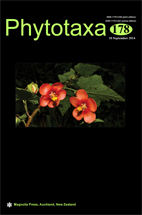Abstract
The present study analyzed 267 samples of terrestrial habitats from different fragmented areas of the Atlantic Rainforest located in São Paulo State (southeastern Brazil), finding 61 taxa of coccoid cyanobacteria, 21 of which we were only capable of identifying at the generic level. The samples were examined using light microscopy and populations were morphometrically separated and taxonomically identified. Among the identified taxa, we propose the elevation of Chroococcus turgidus var. subviolaceus to Chroococcus subviolaceus comb. et stat. nov. Due to the high species richness found, we assume that the Atlantic Rainforest is a ‘hotspot’ of coccoid cyanobacterial diversity and should be better studied, in addition to other tropical ecosystems and terrestrial habitats, which have been shown to be suitable places for cyanobacterial diversity establishment.

